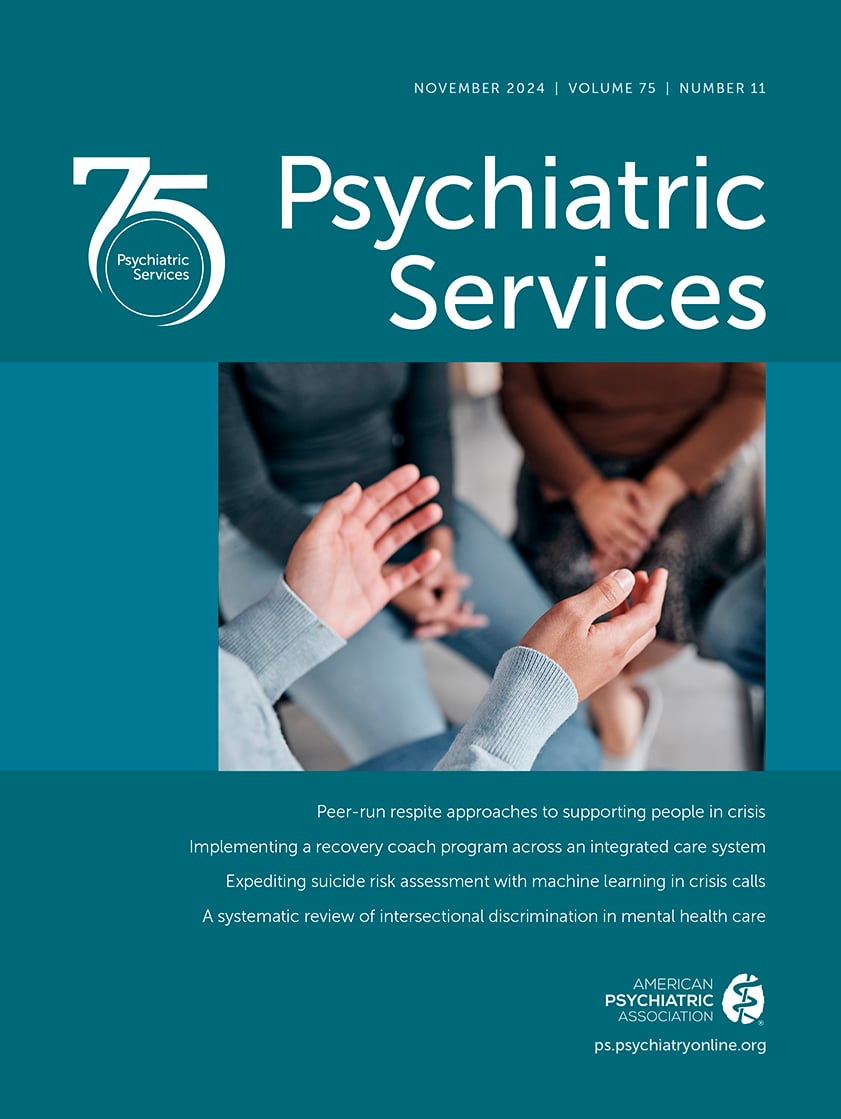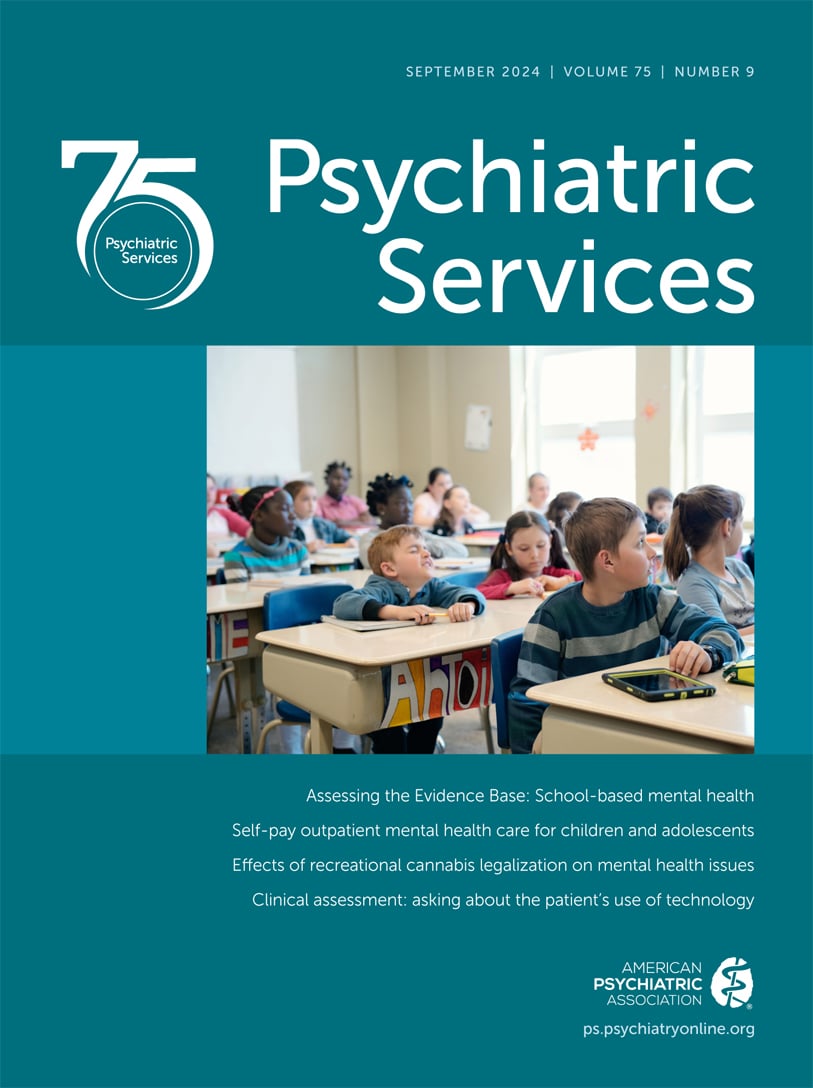Psychiatric Services
- Volume 41
- Number 2
- February 1990
Article
Publication date: 01 February 1990
Pages133–134Clinicians have long recognized that disulfiram is a useful adjunct for the management of alcohol-abusing patients because the drug diminishes the risk of impulsive drinking in otherwise well-motivated patients. Careful monitoring and attention to drug ...
https://doi.org/10.1176/ps.41.2.133Publication date: 01 February 1990
Pages135–138Dr. Sharfstein's Introduction: The federal-state mental health care program is a major payer for mental health care. Medicaid could finance additional community services needed by adults and children with severe mental illness, but it is both ...
https://doi.org/10.1176/ps.41.2.135Publication date: 01 February 1990
Pages149–154Medicare's use of diagnosis-related groups and the frequent acceptance of lengt of stay as an indicator of resource utilization has caused a surge of interest in the predictability of length of hospital stay for psychiatric inpatients. By constructing a ...
https://doi.org/10.1176/ps.41.2.149Publication date: 01 February 1990
Pages154–158The prevalence and characteristics of childhood sexual abuse among 50 male and 5O female psychiatric inpatients were assessed in direct interviews. Forty patients reported some type of childhood sexual abuse. Abuse involving genital contact was reported ...
https://doi.org/10.1176/ps.41.2.154Publication date: 01 February 1990
Pages159–163The medical records of 35 pregnant women hospitalized for nonorganic, psychotic symptoms were reviewed to determine their demographic and psychosocial characteristics as well as patterns of assessment, treatment, and disposition. The review showed that ...
https://doi.org/10.1176/ps.41.2.159Publication date: 01 February 1990
Pages163–166Issues facing state psychiatric hospitals as a result of the epidemic of human immunodeficiency virus (HIV) are illustrated by five cases. These issues include use of universal precautions to prevent transmission of HIV, medical diagnosis and management ...
https://doi.org/10.1176/ps.41.2.163Publication date: 01 February 1990
Pages167–171The effects of the therapist's assuming control of the patient's finances through representative payeeship is discussed. The authors use case examples from an urban outpatient community mental health center to illustrate administrative issues, ethical ...
https://doi.org/10.1176/ps.41.2.167Publication date: 01 February 1990
Pages172–174Data on patient census, bed capacity, and staffing levels in stateoperated forensic psychiatric inpatient programs in 1986 were collected from forensic mental health directors of the 50 states and the District of Columbia. Of the 75 programs identified, ...
https://doi.org/10.1176/ps.41.2.172Publication date: 01 February 1990
Pages175–179Seventy-two patients who received five years of intensive case management services were transferred into mainstream community mental health center services with a much higher patient-to-staff ratio. At the end of a two-year follow-up, 91 percent of the ...
https://doi.org/10.1176/ps.41.2.175Publication date: 01 February 1990
Pages180–183In early 1988 a discharge assessment team surveyed the records of 421 extended-care patients at Washington's Western State Hospital to facilitate planning for patients who were able to move out of the hospital. The group as a whole manifested serious ...
https://doi.org/10.1176/ps.41.2.180Publication date: 01 February 1990
Pages184–188A total of 208 long-stay hospital patients in New South Wales, Australia, who were discharged to supported community accommodations were studied to determine their adjustment in the community. For 172 patients, measurements were obtained of the patients' ...
https://doi.org/10.1176/ps.41.2.184Publication date: 01 February 1990
Pages191–193Persons involved in family and nonfamily violence may be distinguished both demographically and behavionally. There appear, in fact, to be grounds to consider them as two different groups. Those involved in family violence appear to be the most stable in ...
https://doi.org/10.1176/ps.41.2.191Past Issues
View Issues Archive
Vol. 75 | No. 11

Vol. 75 | No. 10

Vol. 75 | No. 9
